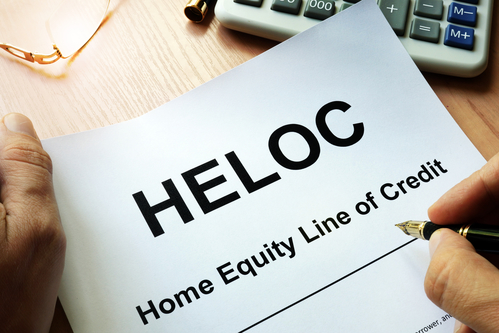Special to the Financial Independence Hub
A HELOC, short for “home equity line of credit,” is a revolving line of credit secured by your home’s equity. HELOCs have a reputation for being a convenient, flexible and low-cost way of accessing credit. A HELOC can be a great way to borrow money cheaply (it sure beats using your credit card!), as long as you do it responsibly.
Using your HELOC responsibly means using it for something that is likely to increase your net worth and having a plan to pay back the money you borrow. (It can be tempting to make interest-only payments, but you’ll literally find yourself no further ahead.) To address this, most lenders have recently introduced stricter qualification rules for HELOCs. You’re required to pass the mortgage stress test (2% + your HELOC rate), in addition to some lenders making you qualify based on your HELOC limit rather than your current outstanding balance.
The amount that you can borrow by way of a HELOC has also decreased over the years. With a HELOC today, you can access up to 65% of your home’s appraised value. Note that your mortgage balance and HELOC together can’t be more than 80% of your home’s appraised value.
Now that you have a better understanding of HELOCs, let’s take a look at a couple ways to make the most of your HELOC.
Home Renovations
A popular use of HELOCs is home renovations. But before undertaking a major home renovation, it’s important to ask yourself why you’re doing the renovation. Is it for your current enjoyment or is it to increase the resale value of your property? If it’s for the former, that’s fine, as long as it doesn’t significantly delay other important life goals like saving for retirement. Likewise, even if you aren’t thinking about selling your home anytime soon, you might want to think twice about going into debt for a renovation that will make your home more difficult to sell (a swimming pool comes to mind).
If you’re looking to increase the resale value of your home, consider renovations that improve your home’s cosmetic appearance and curb appeal. The kitchen and bathroom are two rooms worth spending some money to bring them up to date. (i.e. You probably shouldn’t expect to get top dollar if you’re selling your home with its original lime green bathroom fixtures. You may see it as vintage, while potential buyers will just see many dollar signs.)
Lastly, if you’re planning to rent out your basement, this can be a good use of a HELOC. Whether you’re installing a kitchen, bathroom or separate entrance, you can use the rent from your tenants to pay back the money you owe on the HELOC.
Debt Consolidation
A HELOC can be a great way to consolidate debt and pay it down at a much lower interest rate. If you’re paying credit card interest at 19% or higher and your mortgage is coming up for renewal, it almost always makes sense to roll that high-interest debt into your mortgage by way of a HELOC. By doing this, you’ll immediately save on interest.
That being said, the mortgage stress test complicates matters a little. You must pass the stress test in order to do that. That’s why I’d encourage you to speak with a good mortgage broker who can help run the numbers and find the mortgage option that makes the most sense for you.
Sean Cooper is the bestselling author of the book, Burn Your Mortgage: The Simple, Powerful Path to Financial Freedom for Canadians. He bought his first house when he was only 27 in Toronto and paid off his mortgage in just 3 years by age 30. An in-demand Personal Finance Journalist, Money Coach and Speaker, his articles and blogs have been featured in publications such as the Toronto Star, Globe and Mail, Financial Post and MoneySense. Connect with Sean on LinkedIn, Twitter, Facebook and Instagram.



